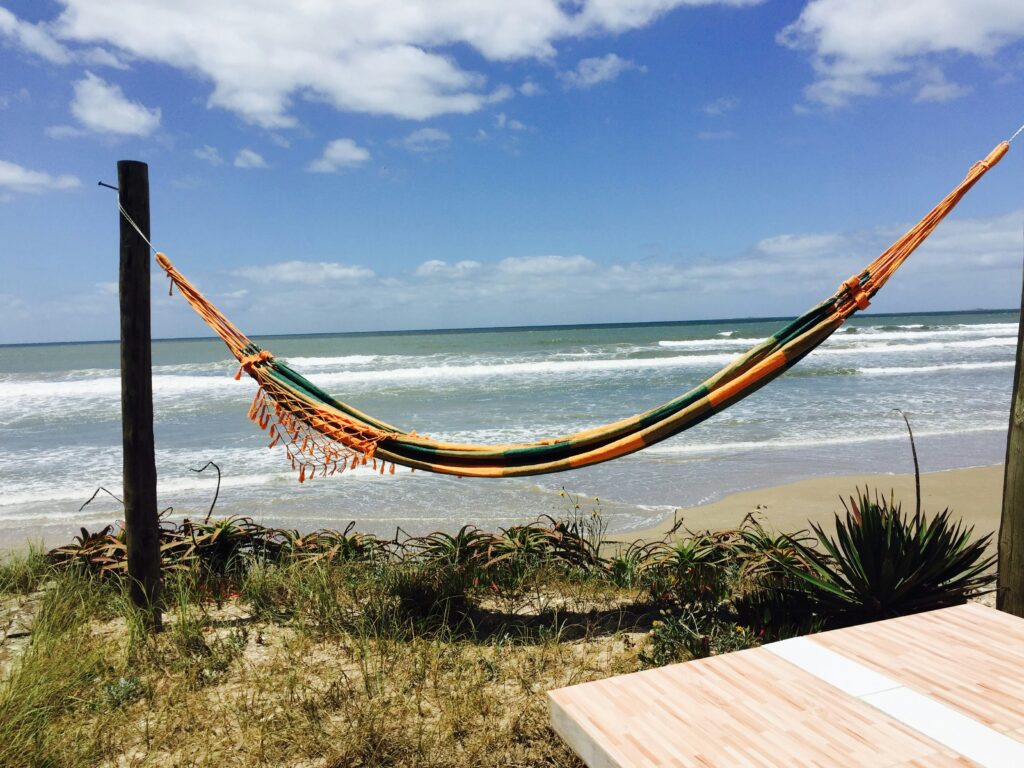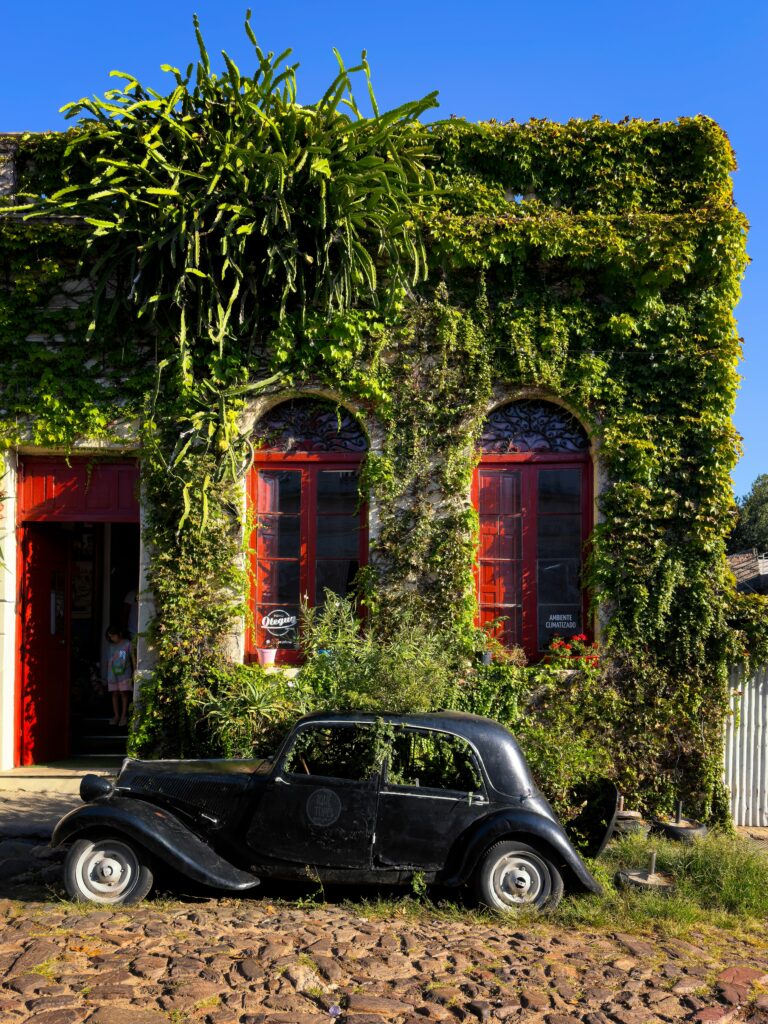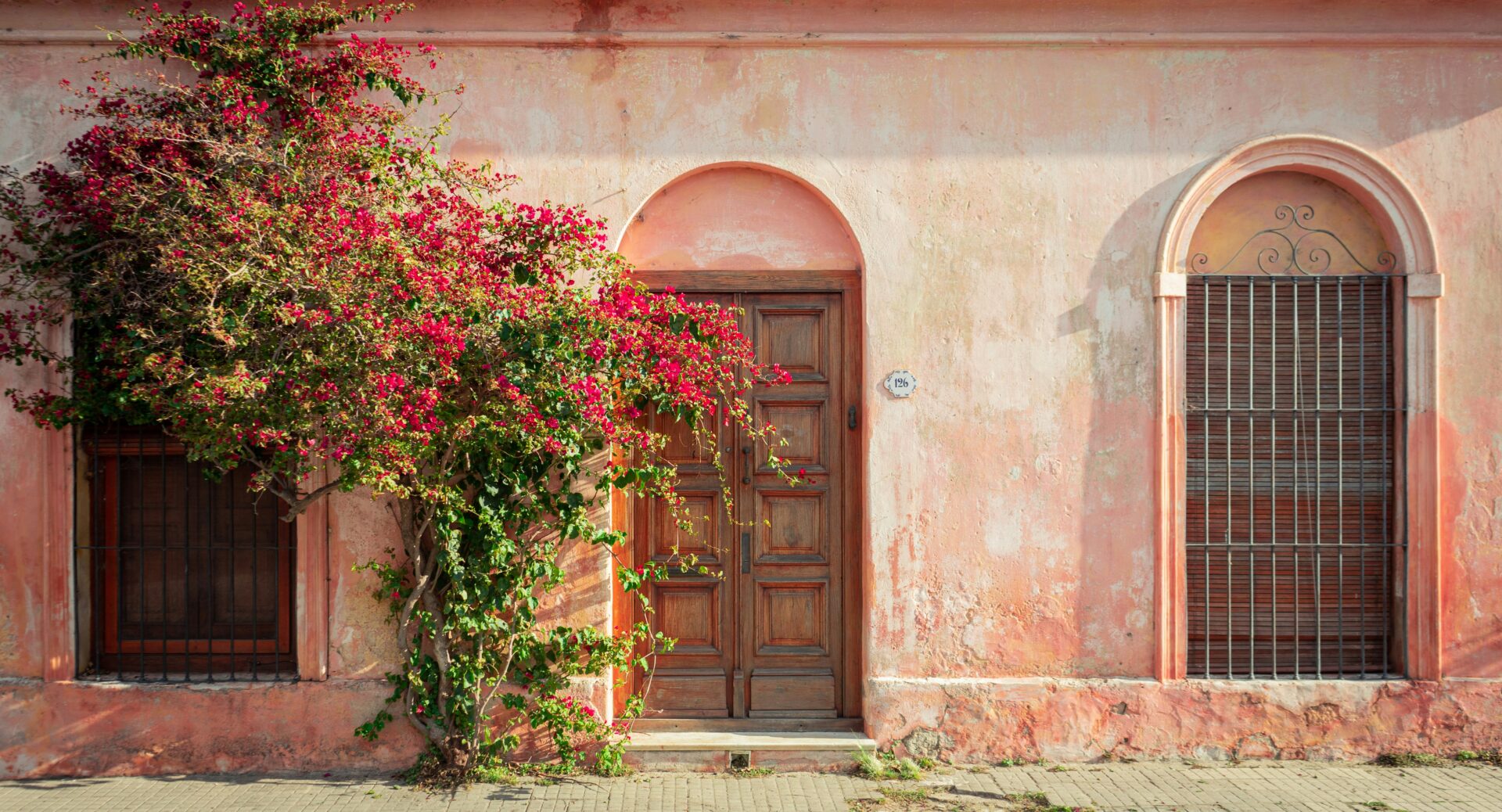Why we love Uruguay
Uruguay might be small, but it’s full of spirit. Stroll the sun-washed streets of Colonia del Sacramento, taste Tannat among the vineyards of Carmelo and watch waves roll onto José Ignacio’s easygoing shores. In Montevideo, the café culture hums beside the sea, while inland estancias offer a slower way to stay. There’s a quiet confidence here – relaxed, creative, a little under the radar. This guide shares everything you need to know before you go.

Entry requirements
British and American travellers do not require a visa to enter Uruguay for stays of up to 90 days. Your passport should be valid for at least six months beyond your date of arrival and contain at least one blank page. Upon entry, you may be asked to show proof of onward or return travel, confirmation of accommodation and evidence of sufficient funds for your stay. Immigration officials will stamp your passport when you enter the country – make sure they do, as this stamp is essential for departure.
If you’re planning to extend your stay, you’ll need to contact the Dirección Nacional de Migración (National Directorate of Migration). Travellers from other territories should check their local government advice or speak with our operations team for up-to-date entry guidance.
Health and safety
We are not certified to give medical advice, but we recommend you consult your doctor about your vaccination history and discuss any further vaccinations you may need for your trip. We recommend this website for travel vaccination information and advice on bringing medication into the country.

Getting around
Travelling through Uruguay is easy and enjoyable, with a variety of transport options that make exploring this small but scenic country a pleasure.
Flights: Although the country is compact, domestic flights can save time on longer routes – particularly between Montevideo, Punta del Este and the northern towns of Salto and Paysandú.
Transfers and Taxis: We can arrange all your transfers for you, whether it’s airport pickups or multi-stop journeys between regions. In cities, taxis are easy to find, and Uber operates in Montevideo and Punta del Este for extra convenience.
Car Hire: For those who like independence, hiring a car is one of the best ways to explore Uruguay’s rural heartlands and coastal roads at your own pace. Driving is straightforward and roads are well maintained.
Ferries: Ferries offer a scenic way to travel, particularly between Montevideo or Colonia del Sacramento and Buenos Aires – ideal for combining Uruguay and Argentina into one unforgettable journey.

Climate and packing
Uruguay enjoys a mild, temperate climate with plenty of sunshine throughout the year. Seasons are reversed from the Northern Hemisphere, with warm summers from December to March and cooler winters from June to August.
Coastal Areas (Montevideo, Punta del Este)
Climate: Warm summers, mild winters.
Pack: Light, breathable clothing, swimwear, sunglasses and sunscreen. A light jumper or wrap is useful for breezy evenings.
Countryside and Vineyards (Carmelo, Maldonado)
Climate: Pleasant year-round with mild winters.
Pack: Comfortable clothing for outdoor walks and vineyard tours, sturdy shoes, and a sunhat.
Northern Region (Salto, Paysandú)
Climate: Subtropical – hot summers and mild winters.
Pack: Loose, breathable fabrics, sunscreen and insect repellent.
Eastern Coast (Rocha, Cabo Polonio)
Climate: Maritime and mild, with refreshing coastal breezes.
Pack: Casual beachwear, light layers and a waterproof jacket in case of coastal showers.
Southern Region (Colonia del Sacramento)
Climate: Temperate with variable weather.
Pack: Layers for cooler evenings and comfortable shoes for exploring historic towns.

Laws and customs
Take a look at Uruguay’s laws and customs here. The country is welcoming, relaxed and known for its progressive values, but as always, a few respectful habits go a long way.
– Always carry a copy of your passport or photo ID, keeping the original safely in your accommodation.
– Greetings are warm – expect a handshake or a single kiss on the cheek, even among acquaintances.
– Sharing mate, a traditional herbal tea, is part of daily life and an expression of friendship. Accepting it when offered is considered polite.
– Uruguay is one of the safest countries in South America, but standard precautions still apply. Keep valuables secure and avoid leaving belongings unattended, especially at the beach or in busy city areas.
Money Matters
Uruguay’s local currency is the Uruguayan Peso (UYU). Credit and debit cards are widely accepted in cities and resorts, but rural or small-town shops may prefer cash. ATMs are readily available in towns and cities. We recommend withdrawing money on arrival, and your local representative will be happy to assist.
Tipping
Tipping is not mandatory but is appreciated for good service.
– Restaurants: 10% of the bill is customary if service isn’t already included.
– Hotels: Around $2–3 per bag for porters and $3–5 per night for housekeeping.
– Taxis: Round up to the nearest convenient amount.
– Guides and drivers: $10–15 per traveller for a full-day tour or safari.

Practicalities
Plug type: Uruguay uses plug types C and F. Plug type C has two round pins, and type F has two round pins with side grounding clips. The standard voltage is 230V and frequency is 50Hz, so make sure to bring a suitable adapter.
Time zone and flights: Uruguay is GMT –3. Most international visitors arrive via Montevideo’s Carrasco International Airport. There are direct connections from major South American cities such as Buenos Aires, São Paulo and Santiago.
Language: Spanish is the official language, but English is understood in hotels, restaurants and tourist areas. A few handy phrases:
Hola – Hello
Por favor – Please
Gracias – Thank you
Adiós – Goodbye
Salud – Cheers
¿Dónde está…? – Where is…?

Food and drink
Uruguayan cuisine is a celebration of flavour, tradition and simplicity – a fusion of Spanish, Italian and rural influences that mirror the country’s relaxed, sociable way of life. Dining here is all about gathering with friends and family around the grill, glass of wine in hand.
Asado: The star of Uruguayan cuisine – a traditional barbecue cooked over open coals, featuring everything from juicy steaks to smoky sausages.
Chivito: Uruguay’s most iconic sandwich, packed with steak, ham, cheese, lettuce, tomato and a fried egg – a hearty, satisfying classic found in cafés nationwide.
Puchero and Mondongo: Traditional stews made with meat, vegetables and spices.
Seafood: Along the coast, expect grilled fish, seafood paella and fresh Atlantic catches served simply with lemon and herbs.
Dulce de Leche: A rich caramel spread found in pastries, cakes and Uruguay’s beloved alfajores, perfect with an afternoon coffee.
Mate: More than a drink, this herbal tea is a symbol of friendship – sipped and shared at all times of day.
Wine: Uruguay’s pride and joy is Tannat, a full-bodied red that pairs beautifully with barbecued meats and hearty local dishes.
Keep connected
For longer stays or travel into rural areas, consider purchasing a local SIM card from providers like Antel, Claro or Movistar at the airport or in major towns. Alternatively, download an eSIM like Airalo before you travel for seamless connectivity throughout your trip.
